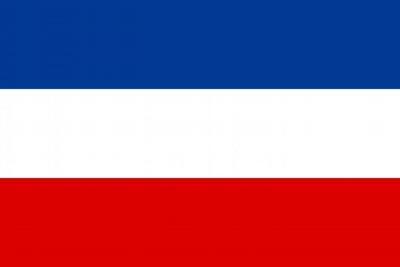The Tripartite Pact, also known as the Berlin Pact, was an agreement between Germany, Italy, and Japan signed in Berlin on 27 September 1940 by, respectively, Joachim von Ribbentrop, Galeazzo Ciano and Sabur Kurusu. It was a defensive military alliance that was eventually joined by Hungary (20 November 1940), Romania (23 November 1940), Bulgaria (1 March 1941) and Yugoslavia (25 March 1941) as well as by the German client state of Slovakia (24 November 1940). Yugoslavia's accession provoked a coup d'tat in Belgrade two days later. Germany, Italy and Hungary responded by invading Yugoslavia. The resulting Italo-German client state, known as the Independent State of Croatia, joined the pact on 15 June 1941.
The Tripartite Pact was, together with the Anti-Comintern Pact and the Pact of Steel, one of a number of agreements between Germany, Japan, Italy, and other countries of the Axis Powers governing their relationship.The Tripartite Pact was directed primarily at the United States. Its practical effects were limited since the Italo-German and Japanese operational theatres were on opposite sides of the world, and the high contracting powers had disparate strategic interests. As such the Axis was only ever a loose alliance. Its defensive clauses were never invoked, and signing the agreement did not oblige its signatories to fight a common war per se.
The Kingdom of Yugoslavia (Serbo-Croatian: Kraljevina Jugoslavija / Краљевина Југославија; Slovene: Kraljevina Jugoslavija) was a state in Southeast and Central Europe that existed from 1918 until 1941. From 1918 to 1929, it was officially called the Kingdom of Serbs, Croats and Slovenes (Serbo-Croatian: Kraljevina Srba, Hrvata i Slovenaca / Краљевина Срба, Хрвата и Словенаца; Slovene: Kraljevina Srbov, Hrvatov in Slovencev), but the term "Yugoslavia" (literally "Land of South Slavs") was its colloquial name due to its origins. The official name of the state was changed to "Kingdom of Yugoslavia" by King Alexander I on 3 October 1929.The preliminary kingdom was formed in 1918 by the merger of the provisional State of Slovenes, Croats and Serbs (itself formed from territories of the former Austria-Hungary, encompassing today's Bosnia and Herzegovina and most of today's Croatia and Slovenia) and Banat, Bačka and Baranja (that had been part of the Kingdom of Hungary within Austria-Hungary) with the formerly independent Kingdom of Serbia. In the same year, the Kingdom of Montenegro also proclaimed its unification with Serbia, whereas the regions of Kosovo and Vardar Macedonia had become parts of Serbia prior to the unification.The state was ruled by the Serbian dynasty of Karađorđević, which previously ruled the Kingdom of Serbia under Peter I from 1903 (after the May Coup) onward. Peter I became the first king of Yugoslavia until his death in 1921. He was succeeded by his son Alexander I, who had been regent for his father. He was known as "Alexander the Unifier" and he renamed the kingdom "Yugoslavia" in 1929. He was assassinated in Marseille by Vlado Chernozemski, a member of the Internal Macedonian Revolutionary Organization (IMRO), during his visit to France in 1934. The crown passed to his 11-year-old son Peter. Alexander's cousin Paul ruled as Prince regent until 1941, when Peter II came of age. The royal family flew to London the same year, prior to the country being invaded by the Axis powers.
In April 1941, the country was occupied and partitioned by the Axis powers. A royal government-in-exile, recognized by the United Kingdom and, later, by all the Allies, was established in London. In 1944, after pressure from the British Prime Minister Winston Churchill, the King recognized the government of Democratic Federal Yugoslavia as the legitimate government. This was established on 2 November following the signing of the Treaty of Vis by Ivan Šubašić (on behalf of the Kingdom) and Josip Broz Tito (on behalf of the Yugoslav Partisans).

1941Mar, 25
The Kingdom of Yugoslavia joins the Axis powers with the signing of the Tripartite Pact.
Choose Another Date
Events on 1941
- 17Mar
Franklin D. Roosevelt
In Washington, D.C., the National Gallery of Art is officially opened by President Franklin D. Roosevelt. - 27May
Franklin D. Roosevelt
World War II: U.S. President Franklin D. Roosevelt proclaims an "unlimited national emergency". - 26Jul
French Indochina
World War II: In response to the Japanese occupation of French Indochina, US President Franklin D. Roosevelt orders the seizure of all Japanese assets in the United States. - 17Sep
Great Patriotic War
World War II: A decree of the Soviet State Committee of Defense, restoring Vsevobuch in the face of the Great Patriotic War, is issued. - 14Dec
Thailand
World War II: Japan signs a treaty of alliance with Thailand.

 English
English  español
español  français
français  português
português  русский
русский  العربية
العربية  简体中文
简体中文 